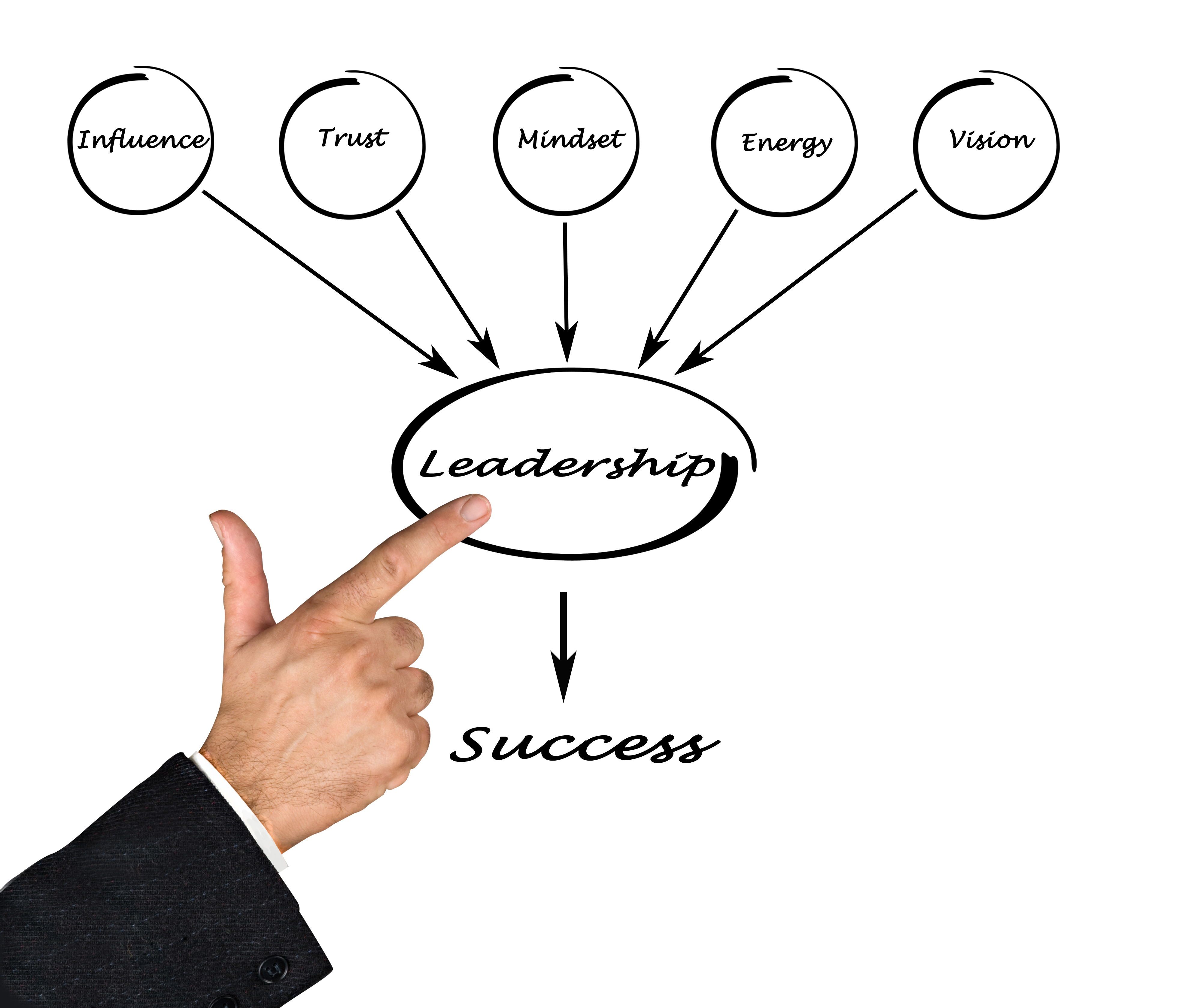
The day-to-day grind of running a business can create more than enough stress and responsibilities. It may be hard for a CEO to truly focus on the future. But there are essential questions that business leaders should consider. What new directions can the business take? How can the business innovate and compete? And how can technology assist these efforts?
Here are 10 ways business leaders can expand their way of thinking and look toward the future.
1. Change your mindset
How can a CEO get beyond today and look well past tomorrow? “Stretch your sensibilities,” Joseph Pistrui writes for the Harvard Business Review, using Uber as an example. He recommends creating a “leadership circle,” in which senior leaders explore challenges “outside a hierarchical reporting framework.”
“This will import and share many views about emerging trends and organize them into probable patterns,” Pistrui writes. “No one person, or one small group, is smart enough to know and command all. Use a circle to arrive at a presumptive hunch about a possible productive opportunity in the future. The Uber phenomenon is one example. While some see it simply as a ‘taxi hailing app,’ others see Uber as a new taxi service platform, while others still view Uber as a natural step toward a future when taxis are driverless. The hunch that tomorrow’s taxi is going to be profoundly different gives managers opportunities to take steps to prepare for a future which they cannot predict with certainty, but which can provide their companies a new trajectory.”
2. Be an integrator…
In a story for Strategy-Business.com, Ken Favaro, Per-Ola Karlsson and Gary L. Neilson examined what the CEO landscape will look like even further out — 2040, to be exact. One major development will be the continued growth of the integrator, and the story uses Amazon as an example.
“Generally speaking, integrators will be large-scale organizations focused on providing distinct, solutions-based value propositions to their customers,” the authors say. “These solutions will be built on a unique set of complementary capabilities, in the same way that Amazon, by virtue of its superior logistics and distribution system, is able to sell a broad array of products to consumers of all stripes, or Cisco is able to offer platforms that address a range of customer needs through extended relationships.”
3. …or be a specialist
The integrators will sell, and what they sell typically will come from specialists. Favaro, Karlsson and Neilson describe them as “the complementary players that provide the products and services the integrators sell.”
“Just as there are thousands of small retailers supplying one Amazon or eBay, there will be many more specialists than there are integrators,” according to the authors. “Specialists are the next-generation accessory makers, parts suppliers and inventors who excel at one particular, often narrow, thing. Like integrators, specialists will compete with distinct market propositions based on a core set of unique, advantageous capabilities whose outputs align with the integrators’ strategies.”
4. Be committed
Taking off in a new business path can be a bold and noble move toward the future, yet it may come with uncertain moments in its initial steps. CEOs must show resolve and prove to employees and clients that real commitment comes with these changes. Pistrui examines this in his Harvard Business Review story, using Boeing as a primary example.
“Leaders must define the new direction and how it will change everyone’s priorities,” Pistrui writes. “And the leader must insist that returning to old ways is blasphemy. In the 1950s, Boeing was an insignificant player in commercial airliners. Douglas and Lockheed kept refining propeller aircraft. Boeing moved the company’s emphasis to building jets, a presumptive hunch that did not pay off for years. Yet, Boeing’s leaders did not flinch. Today, companies with the best chance for survival have leaders who personally stand for change — not talk about change, not hint about it nor suggest that others change.”
5. Share the vision.
Focusing on the future will require excellent communication with employees. Their buy-in is essential, and they will need to be willing to “develop the skills and behaviors that will achieve something novel and special,” Pistrui writes. His example: Microsoft CEO Satya Nadella.
“Under him, the company has expanded its cloud platform so it is the umbrella for the whole company,” says Pistrui. “Using the banner ‘One Microsoft,’ Nadella’s leadership circle has been tying everyone to the cloud with data managed on servers and not on desktops or devices. Nadella has also been changing Microsoft’s culture so that the customer is the central focus. The new Windows 10 software has a universal app configuration and offers free upgrades to attract new users, and Nadella has pushed Microsoft to create winning apps for Apple products to place Microsoft prominently on Apple desktops and devices. In this way, Microsoft is learning to forget old rivalries and think first of its own best interests.”
6. Think like a chancellor
In a story for FastCompany.com, Jane Porter writes that transparency will be a major emphasis for future CEOs (she uses the fictional “Melissa” as such a future leader). This could mean the chairman-of-the-board structure becomes ineffective.
“It also puts added pressure on Melissa to be an amazing communicator — able to listen, speak, write and engage with stakeholders as clearly and effectively as possible,” Porter explains. “It’s a role that much more closely resembles that of a university chancellor than today’s CEO. Getting there means having as many diverse experiences and putting yourself in as many challenging new situations as possible.”
7. Think ‘radical creativity’
That’s the phrase used in a study by brand consultant firm Wolff Olins, which surveyed 43 CEOs on leading into the future, along with more than 400 employees in their 20s (“the next generation”). Technology is “changing culture everywhere in the world, leading to the emergence of a new model of leadership,” the study says, and employees have increased confidence, mobility and idealism.
“Leaders, in response, are learning to be less the visionary, less the sage, less the objective-setter, and more the shaper, the connector, the questioner,” the study says. “And yet at times, they also need to intervene, to insist, to control. It’s a fluid role, its shape not yet clear. What is clear, as leaders forge their own new models, is that the old ways no longer work. CEOs can’t fall back on best practice. They have to be original. Leadership, more than ever, needs creativity. And achieving the impossible needs the most radical kind of creativity.”
8. Embrace collaboration and technical details
The need for collaboration will only increase in the future, Porter writes in her fastcompany.com piece. Teamwork will be a high priority, and that can include some of the more technical or statistic-oriented elements. Porter recommends a “systems approach.”
“Knowing how to build and fit into a well-oiled system will be key for Melissa and her CEO ilk,” says Porter. “But it’s not only human systems that the future CEO will need to be a master of building and maintaining. Being well versed in technological systems — how information flows — will be particularly important. The CEO of the future will know how to manipulate data much more quickly than today’s CEOs, acting fast to put changes in place based on this information.”
9. Emphasize flexibility
Does an “alpha” make the best CEO, with an aggressive, controlling nature? Or does the more collaborative “beta” better serve a business? Martin Zwilling explores this in a story for Entrepreneur.com, and says that future leaders may well come from the beta side. Along with that comes flexibility and speed, he says.
“One of the big mistakes entrepreneurs make is they don’t act quickly enough,” Zwilling explains. “Markets and needs change fast. Now there is a focus on social, global and environmental responsibility. Hierarchies make it hard to adjust positions or redefine roles. The beta culture gets it done.”
10. Think like a millennial
That phrase may make some Baby Boomers and Gen Xers cringe. Generation gaps tend to cause such reactions. But in terms of future leadership, there can be value to adopting some of the millennial trademarks. James O’Brien includes this in his “Future CEO” story for AmericanExpress.com.
“Leadership in the remainder of this decade and into the 2020s and 2030s is almost certain to be deeply connected to the idea of the whole employee,” says O’Brien. “The concept’s roots are intertwined with the millennial worker’s mindset: Your job and personal life are an integrated pair of experiences, more so than they were for their Gen X and Baby Boomer predecessors.”
“To foster collaboration and innovation, CEOs ought to nurture their sharing personalities,” says Vikram Rajan, co-founder of blog content creator phoneBlogger. “No longer are their personal lives, values and hobbies private … embrace this.”

